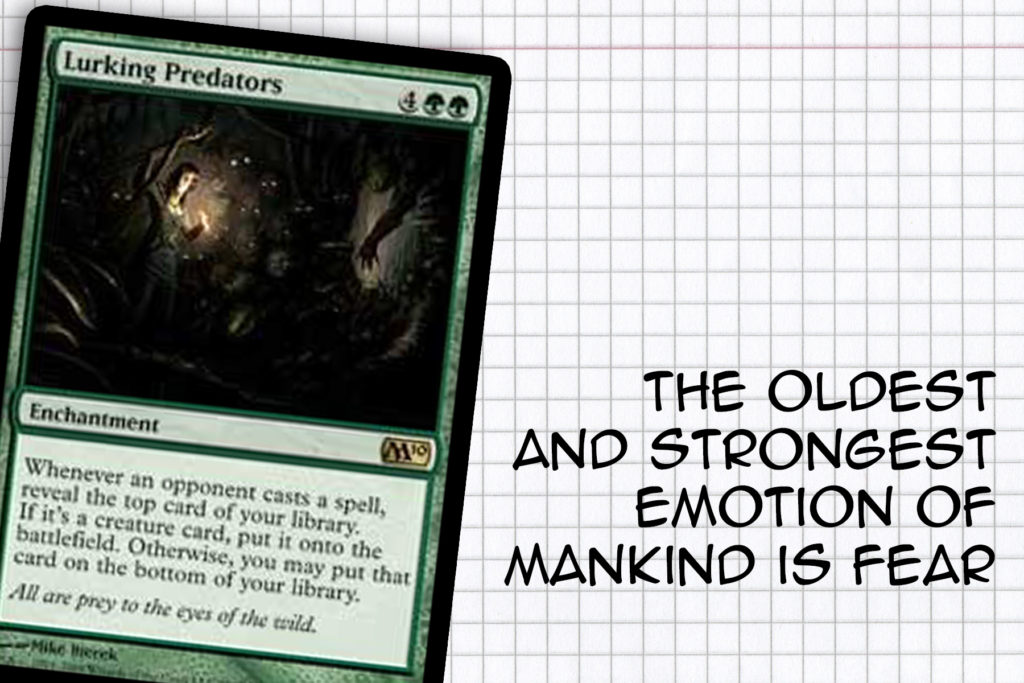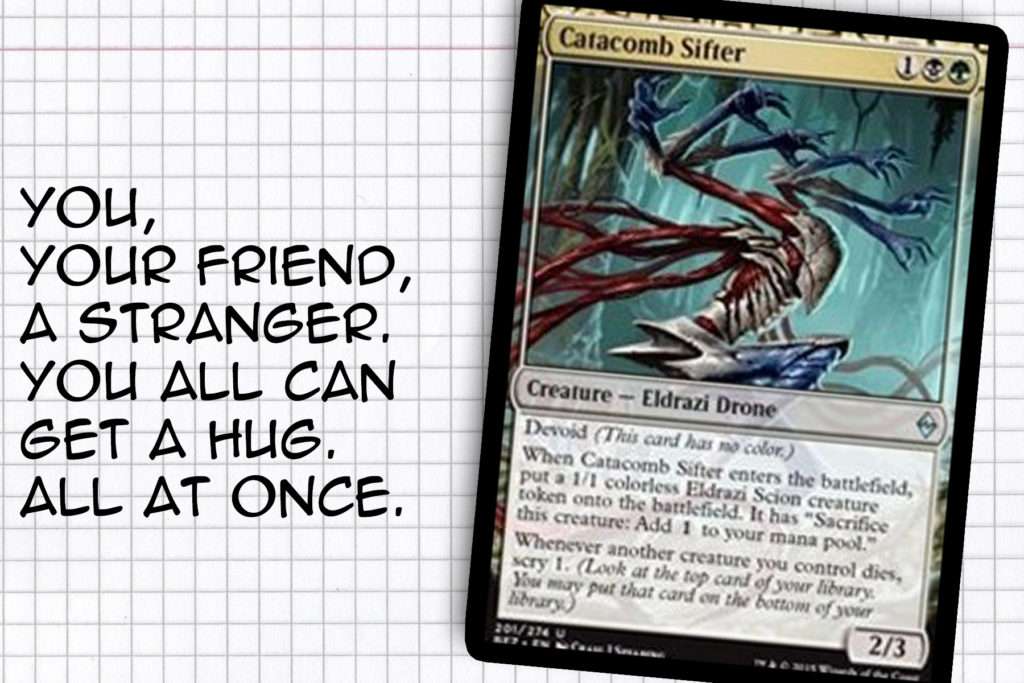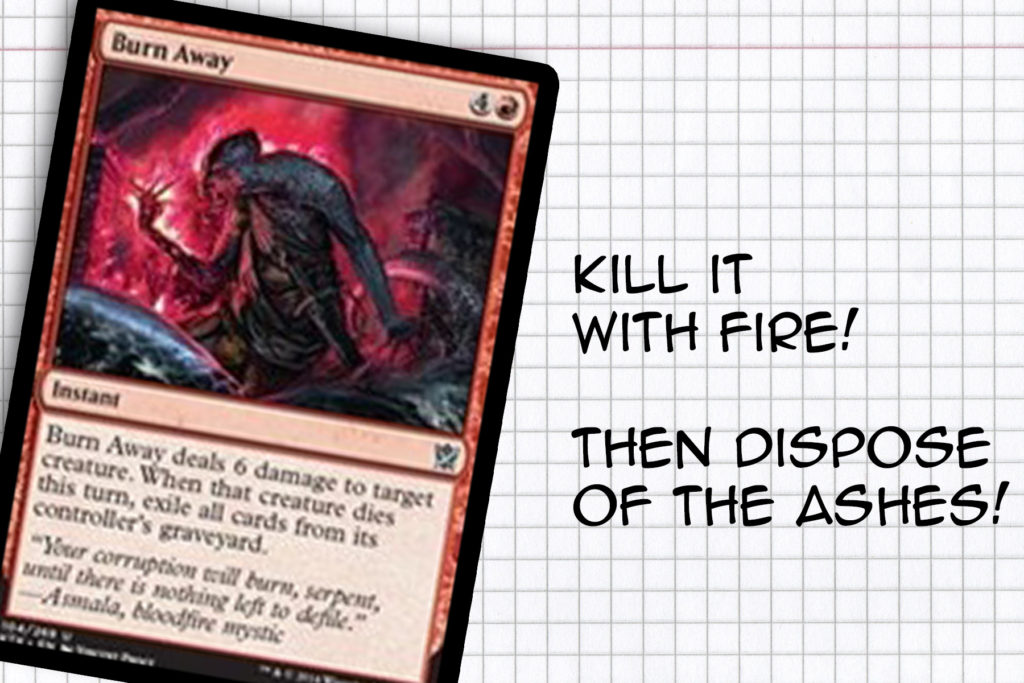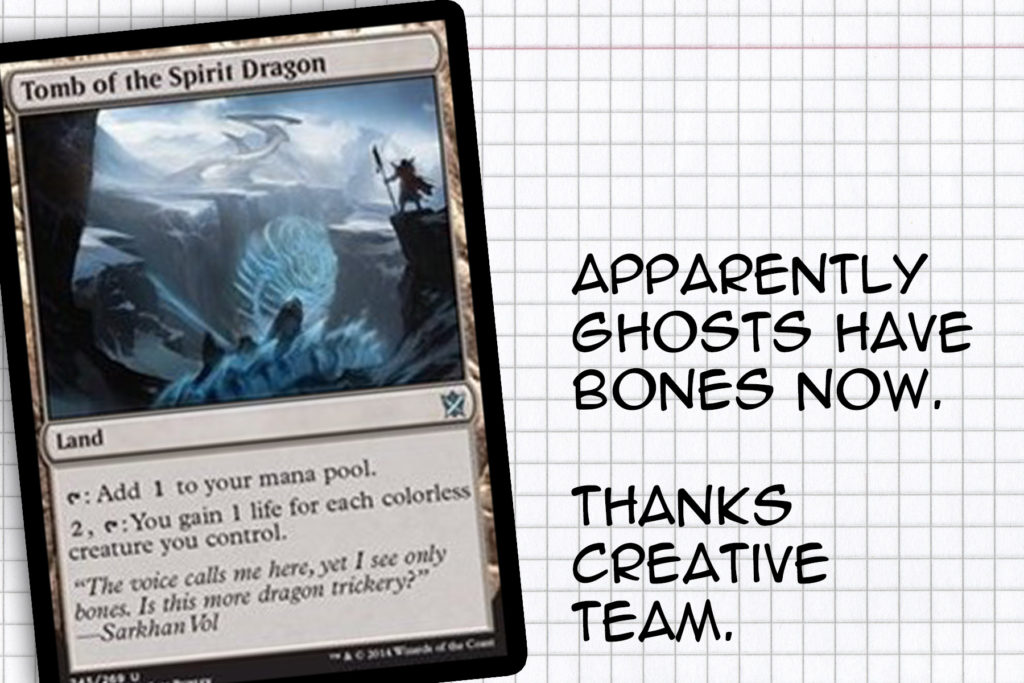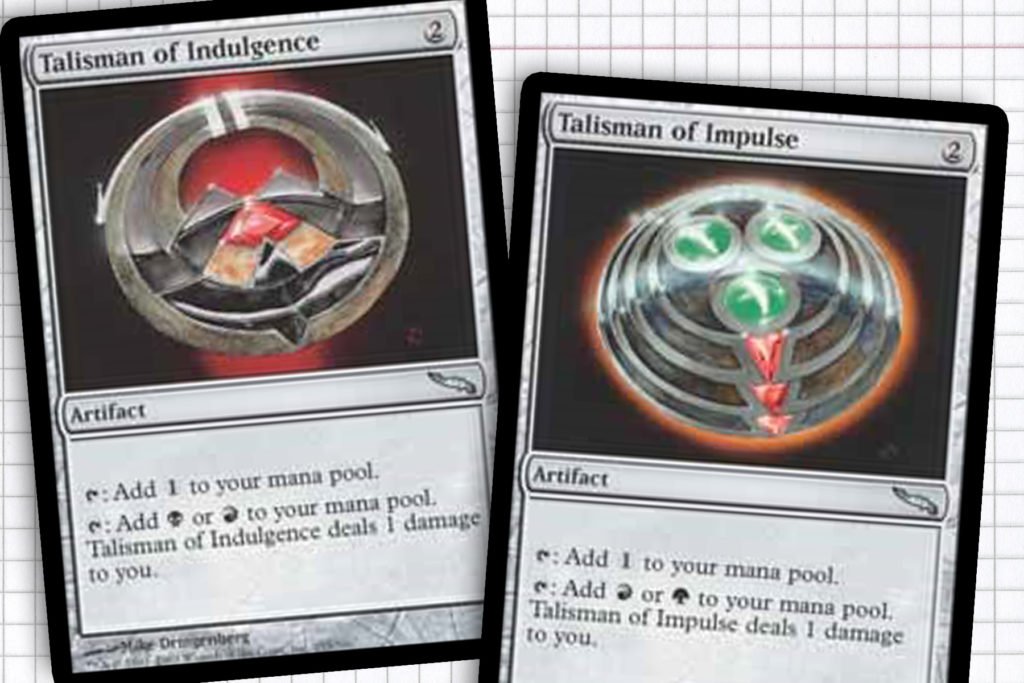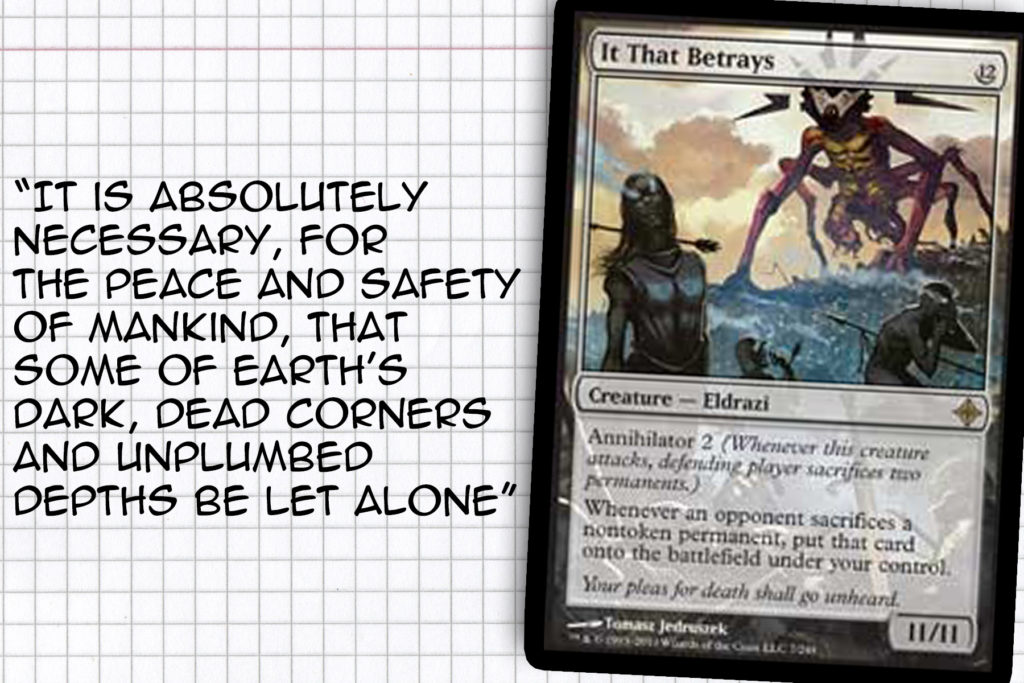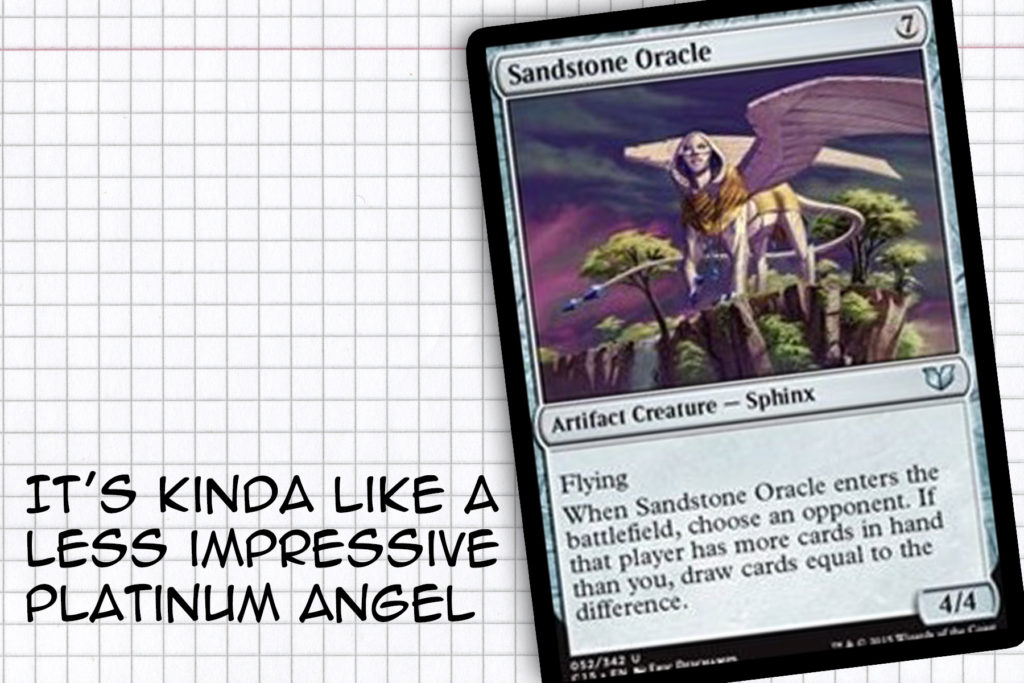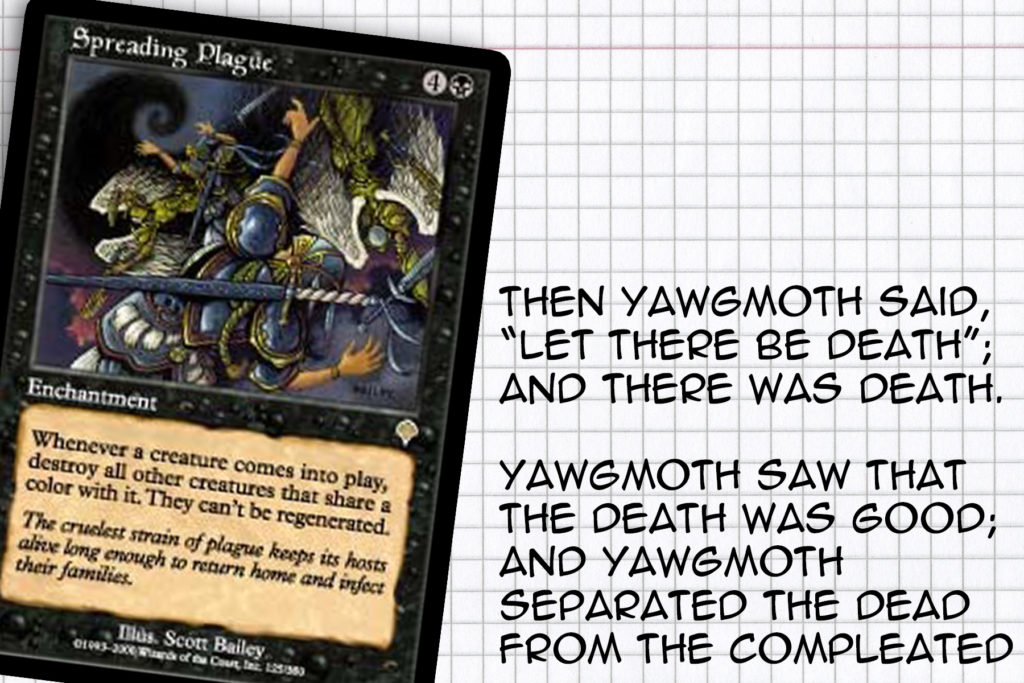Hello all and welcome to Shattered Perceptions, a weekly series where I will be looking for the overlooked gems through the lens of a general of the week and try to be build a workable skeleton for a possible strategy around it. This week I chose to look at a deck I have already built and keen observers may see coming. This week we’ll be covering my Shattergang Brothers deck, aka Goblin Science Fair! The point of interest here being that I am not limited to any time frames—I’ve gotten feedback that most of you thought the Standard window restriction was stupid anyway—and I am certainly not concerned with price or popularity, just fun.
Shattergang Brothers
For those who are not familiar with the Shattergang Brothers, they are goblins that do goblin science. They came into the format through Commander 2013 and right away I felt like they were calling out to me to build something with them. They had abilities that were not new, but I don’t believe had been offered in one package together. And most importantly, no one seemed to be talking about them. I can remember looking at Theros—the new block on the block—and thinking there must be some deck just lying in the weeds to be uncovered. If a solid deck that played enchantment creatures did exist, I never found it and a pile of twenty or so cards just collected dust, getting wiped off from time to time before getting put down again.
Fast forward almost two years to the release of Battle for Zendikar. I had been a fan of the Eldrazi during their first printing; and while I will admit that the next year’s worth of Standard (and Modern) got rocked either in tournament play or story by their existence, as the block premiered I was primed to find something to do with the unknowable monsters. I tried a lot of decks with the Rise of the Eldrazi and Battle for Zendikar sets as the base; The Mimeoplasm, Vela the Night-Clad, Sedris, the Traitor King, all of them fun, but just didn’t feel right. Looking back, I think the problem was I didn’t know exactly what I was looking to build.
Out of the chaos came the Shattergang Brothers and almost instantly I just knew I had something special. I tuned the hell out this deck, grinding it week in and week out and sometimes making a dozen card changes at once just to find one of my favorite decks.
And—in the year of Eldrazi that never ended, even when I thought it had—now, after eighteen months, I stand before you with the list I run.
Out of character for me, one of the factors that has kept me going with the deck is that the general can help to support what the deck is trying to do, but they are never essential to my game plan. Easily the deck I am most known for within my playgroup. Possibly one of top two decks I have built. Powerful without feeling unfair. Tuned for how I play, your experience may differ.
Lurking Predators
At the core, this is a creature deck. You are Stompy, you are the beatdown most games, you derive your card advantage for getting either huge creatures or multiple bodies from a creature entering the battlefield. Lurking Predators is the kind of card that should probably be removed on the spot more than half the time, but often isn’t. It honestly doesn’t do anything when it first gets cast, but like a Forgotten Ancient, the value just presents itself without you needing to invest any further mana and if nothing else, you get some stellar deck manipulation.
This card wasn’t part of the deck for probably the first six months, Oath of the Gatewatch was out and I started exploring options for maximizing the power of the deck, since I assumed there were no more Eldrazi being printed for the foreseeable future. Two things have since surfaced from that experience: 1) I was wrong to not include this from the get-go as soon as green was part of the color identity, and 2) Wizards was going to find a way to print more Eldrazi. A true curse of fortunes.
For those who have played with Lurking Predators and are looking for something different, Aid of the Cowl is a new card out of Aether Revolt that admittedly hasn’t seen a lot of play. Since we are generating a healthy pile of Eldrazi Scions and Spawn, often does a very convincing impression.
Catacomb Sifter
Not too early into the construction of this deck, this became one of my favorite Eldrazi cards, as it helped to establish the deck as a strange overlap of tribal and Aristocrats style gameplay. Catacomb Sifter not only gives me a burst of mana in the early turns of game, but it also gives me the ability to sculpt my draws, much like Lurking Predators does by happenstance. Catacomb Sifter is a good example of the power of the lesser Eldrazi, as I’ve said to others while trying to explain the deck, you’re using weird cards to derive small edges that other might not know how to act against.
After demonstrating the small edges of value the deck could produce over a few games, my former roommate, Grayson – also an avid Eldrazi fan – even complimented how I had built a deck around the Eldrazi as a tribe and not just the Titans. The low-hanging fruit of using the Eldrazi solely for the Titans seemed boring to me and I thought more fun could be had from stacking the deck with cards that happened to share a type and “color” without any cards that especially cared about that. I believe the non-tribal Tribal nature of the deck is what keeps the deck enjoyable to play against while still being powerful, something that will be important further down the list when I get to the cards that supply the most salt.
Burn Away
Targeted removal. Graveyard hate. Depending on your meta, these have varying levels of importance in any given deck. At instant speed, Burn Away fits nicely in both roles, especially since there is always a creature worth killing somewhere. Originally, this was meant to help feed the then-strongly supported Processor theme. As time has gone on, the importance of graveyard removal—especially surprise removal—kept this card relevant and in the deck. This card could be outclassed by a better roleplayer one day, overall I see it as an example of the importance of keeping an eye open for cool and different cards to fill out a deck.
Tomb of the Spirit Dragon
If it’s not apparent from the decklist, this is an unconventional four-color deck due to the required use of colorless mana. I don’t often consider highlighting lands in this series. In fact this is the first land to make it to an article, but this might be the best land in the deck—high praise for an Eldrazi deck containing Eye of Ugin and Eldrazi Temple. How can that be? Well, here is the typical narrative:
- Game starts and people often dismiss the deck because they’ve seen or heard about a Shattergang deck and it doesn’t scare them.
- A few of the smaller Eldrazi get cast, maybe even ramped out off of a Eye or Temple. But it’s just Catacomb Sifter or a Eternal Scourge, nothing they can’t handle.
- One of the bigger non-Titan Eldrazi come down and it’s pretty clear that I need to be managed. So I start getting attacked.
- Wrath of God and its kin start getting played.
- I win or I lose.
It’s somewhere in the latter half of that list where I just start activating Tomb of the Spirit Dragon at the end of every turn or as soon as I start losing creatures through targeted removal. Not only does the card offer me the access to colorless mana required to cast some of my spells, but it also gains me the small bits of life that can make a difference and throw the math off for the rest of the table. The biggest boon in Tomb’s favor is that additionally, isn’t high profile like Eye of Ugin or Eldrazi Temple. For all the work is has done for me, no one has ever destroyed it.
Talisman of Indulgence & Talisman of Impulse
Talk about a cycle I didn’t realize I wanted finished with an enemy pair equivalent until the right context presented itself. Much like the Pain Lands, these mana rocks feel almost perfectly built for a deck like this. The ability to access our colors while also having access to colorless mana with no drawback was one of the great finds in my journey to “use all parts of the buffalo.” Strange as it sounds, these knocked Obelisk of Jund and Manalith out of deck because they could not provide me with all types of mana once Oath came out. And I think that is another lesson to learn about deck construction, context can make really bad or build around cards into something more valuable.
It That Betrays
I love the Eldrazi, in the four Standard-legal sets they have been printed in they have been a unique experience and I appreciate the different ways they have been adapted. I completely understand that their first appearance in Rise of the Eldrazi and the Annihilator mechanic tied to the colorless creatures within the tribe was a huge problem. It made games unfun and completely one sided. To Annihilator’s credit, it does end games, which I think is the most important thing needed for an unfun mechanic.
It That Betrays is my only Annihilator inclusion, because I think it takes the game ending quality and ramps it up to eleven in a way that I feel is in flavor with what the deck is trying to do. This deck is stylistically weird and comes at games from an axis that not everyone is ready for. I love the fact that I will benefit from other players sacrificing permanents, while also having a method to force the issue.
My favorite moment with this card was not even having it in play, but revealing it with Deceiver of Forms and swinging with an entire double-digit board of It That Betrays proxies for the just-about-game-ending turn.
Sandstone Oracle
I feel certain that Sandstone Oracle is the newest addition to the deck, and it was found through a need to fill the occasional need for topdecked card draw to fill my hand later in the game in the same style as Kozilek, the Great Distortion. It think its colorless nature has been the biggest boon, as it skirts around All is Dust and our next card on in the list, but I also believe it has more to offer me than Solemn Simulacrummight, as it can be found with Conduit of Ruin and it flies. While not a superstar, it has made an appearance in a few games and has reliably drawing me at least three cards—there is always someone with a full grip—while also leaving behind a body to get in some damage or chump block. As it stands, if a better option were to present itself, this could be an easy candidate for replacement, but overall it has been a trooper for me and good roleplayer that doesn’t see a lot of play anywhere else in my metagame.
Spreading Plague
I started this list out talking about an enchantment that often should be destroyed on sight. Now let’s talk about the card that secretly has won me more games on Magic Online than I can count. Spreading Plague was a very early include in the deck and it might be the best non-creature spell (or possibly best spell) in the deck. Because we exist in a space where most of our creatures are colorless, this card really does nothing to us. Sure, we might lose an Oracle of Mul Daya or Blood Artist from time to time, but there is nothing like watching a whole table mull about as they trip over themselves trying to assemble some kind of win without access to their utility creatures.
The wise players will let the enchantment sit for a turn or two, choosing instead to leverage their creatures to wipe entire boards and only benefiting from the enter the battlefield effect off their Coiling Oracle or Rune-Scarred Demon. This is the perfect example of a build-around card that has a home in a deck that doesn’t get phased at all by its inclusion. I can’t stop a storm combo deck, but with Spreading Plague by my side, I rarely have to worry about blockers. Worst case, I have a general in three colors waiting in the wings that doesn’t kill any of my creatures.
At the end of the journey I am overjoyed playing with this deck, as I got to check two boxes off with its construction; build around the Brothers and around a much beloved tribe from when I returned back to Magic with Zendikar. There is just something about the raw power and adaptability it offers that might not be apparent on paper. And overall, it just makes me happy to play Commander, even when I don’t even remotely win.
But now I turn the attention back to the readers, anyone who wishes to be vocal and give their own two cents. What generals would you like to see get the Shattered Perspective treatment? What kind of cards would you have plugged into this deck? You can find me on Twitter via @RyanSainio or yelling at Hipsters directly through the e-mail system at the bottom of the page. Let me know if you’ve built an Eldrazi deck.
Until next time, good luck and thank you!
Ryan Sainio is a Graphic Designer who writes about EDH, the story of Magic and the EDH community in his down time. He has been playing Magic: The Gathering since 7th Edition in 2002 and values flavorful and fun gameplay over competitively optimized decks.


